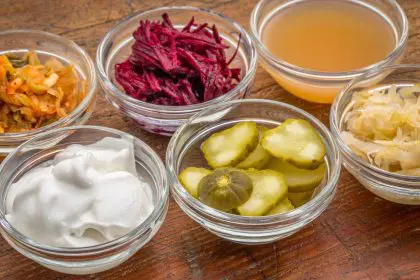Your salad routine has fallen into a rut. Despite your best efforts with fancy vinegars and premium olive oils, that bowl of greens has become predictable, boring, even a chore to eat. But there’s a simple addition that top chefs have been using for centuries that can transform your everyday salad into something extraordinary—and it’s probably not what you’d expect.
The secret isn’t another sweet element or creamy addition. It’s bitterness. Specifically, the strategic use of arugula, that peppery, slightly bitter green that delivers a flavor punch far beyond its delicate appearance. While many home cooks shy away from bitter flavors, embracing this underappreciated taste dimension might be exactly what your salads have been missing all along.
The flavor dimension you’re overlooking
Our modern palates have been hijacked by sweetness. Food manufacturers have gradually increased sugar content in everything from bread to pasta sauce, training our taste buds to expect and crave sweetness. In this sugar-saturated world, we’ve largely forgotten about bitterness—a sophisticated flavor dimension that was once highly prized.
Bitterness acts as a flavor amplifier, enhancing the other tastes in your mouth through contrast. When you include a bitter element like arugula in your salad, the sweet components taste sweeter, the acid brighter, and the salt more pronounced. Without some bitterness, salads often fall flat, regardless of how premium your other ingredients might be.
This principle explains why Italian chefs have incorporated bitter greens into their salads for generations. It’s not masochism—it’s culinary wisdom that creates more complex, satisfying flavor experiences.
The digestive game-changer
Beyond flavor, bitter greens like arugula offer digestive benefits that can transform your entire eating experience. Bitter flavors trigger increased production of digestive enzymes and bile, essentially priming your digestive system to process the meal that follows.
This is why traditional European dining often begins with bitter aperitifs or small salads featuring bitter greens. That preparatory bitterness helps your body digest the remainder of your meal more efficiently, potentially reducing bloating and that uncomfortable post-meal heaviness.
Adding arugula to your salad isn’t just about the immediate flavor—it’s about enhancing your body’s relationship with everything else on your plate. That subtle handful of peppery greens could be the difference between feeling satisfied after eating and feeling uncomfortably full.
The nutritional powerhouse you’ve been missing
Arugula’s benefits extend far beyond taste and digestion. This Mediterranean staple delivers an impressive nutritional profile for very few calories. It’s particularly rich in vitamin K, which supports bone health and proper blood clotting.
The distinct bitter compounds that give arugula its character—glucosinolates—are also powerful phytonutrients being studied for their potential protective effects against certain diseases. These compounds are part of the plant’s natural defense system, and when we consume them, they trigger beneficial stress responses in our cells.
Arugula also provides significant amounts of calcium, potassium, and folate, along with vitamins A and C. This nutritional diversity from just a handful of greens makes it one of the most efficient additions to your salad bowl.
The texture revolution
Salad enjoyment isn’t just about flavor—texture plays a crucial role in how satisfying we find our food. Arugula adds a unique textural dimension that many standard salad greens lack.
Unlike softer lettuces, arugula has a distinctive structural integrity that provides a pleasant resistance when chewed. This textural contrast prevents the monotony that can make salads feel like a chore rather than a pleasure.
The slight structural rigidity of arugula also helps it stand up to dressing without immediately wilting, maintaining its pleasant mouthfeel even after sitting dressed for several minutes. This makes it particularly valuable for entertaining or meal prep situations where immediate consumption isn’t possible.
The simple technique for maximum impact
To incorporate arugula effectively, you don’t need to create an all-arugula salad—that might be overwhelming for many palates. Instead, use it strategically as an accent, comprising about 20-30% of your greens mix.
For those new to bitter flavors, start with baby arugula, which offers a milder introduction to bitterness while still providing the benefits. As your palate adjusts, you can gradually increase the proportion or experiment with more intensely bitter varieties.
The key is balance—pair arugula with ingredients that complement its bitterness. Sweet elements like roasted beets, pears, or a honey-touched dressing create counterpoints that make the bitterness more approachable. Richness from nuts, cheese, or avocado can also soften the bitter edge while creating more complex flavor interplay.
Beyond the salad bowl
Once you’ve discovered arugula’s transformative effect on salads, consider extending its benefits to other dishes. A handful tossed onto a pizza just after it comes out of the oven will wilt slightly from the residual heat while maintaining some structural integrity, adding a flavor dimension that takes your homemade pizza to restaurant quality.
Blend it into pesto for a peppery twist on the classic sauce, use it as a bed for grilled proteins where the heat will slightly tame its intensity, or add it to sandwiches and wraps for a flavor boost that lettuce simply can’t provide.
The culinary versatility of this bitter green extends far beyond the salad bowl, though that remains perhaps its most immediately transformative application.
The seasonal advantage
Another benefit of incorporating arugula is its extended growing season and relative hardiness. While more delicate lettuces struggle in temperature extremes, arugula can thrive in cooler weather, making it available when other local greens might be scarce.
This resilience also makes it an ideal candidate for home gardeners looking to extend their growing season. Even in small spaces, arugula grows quickly and easily, often ready for harvest within a month of planting. Its peppery flavor is actually more pronounced when harvested young, making it perfect for impatient gardeners.
Growing your own also allows you to experience arugula at its peak—a significantly more intense flavor experience than store-bought varieties that have often been selected for milder profiles and longer shelf life.
The humble arugula leaf offers a simple yet profound upgrade to your salad routine, bringing historical wisdom, culinary sophistication, and nutritional benefits to your table with minimal effort. By embracing this bitter green, you’re not just improving a single meal—you’re expanding your palate and reconnecting with a taste dimension that humans have valued for millennia.
Next time you’re at the grocery store or farmers market, grab a bunch of this underrated green. Your salads will never be the same again—and that’s definitely a good thing.















